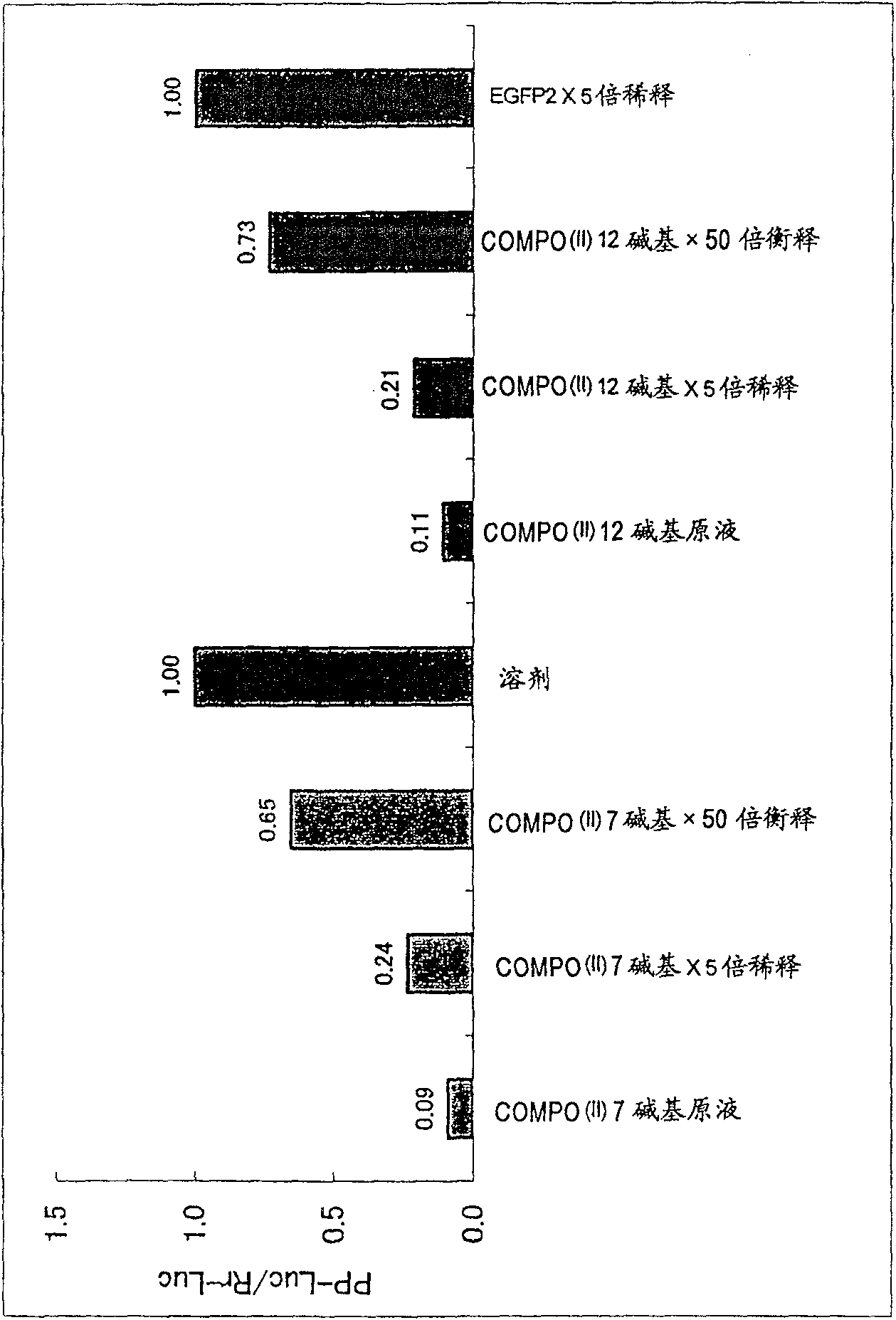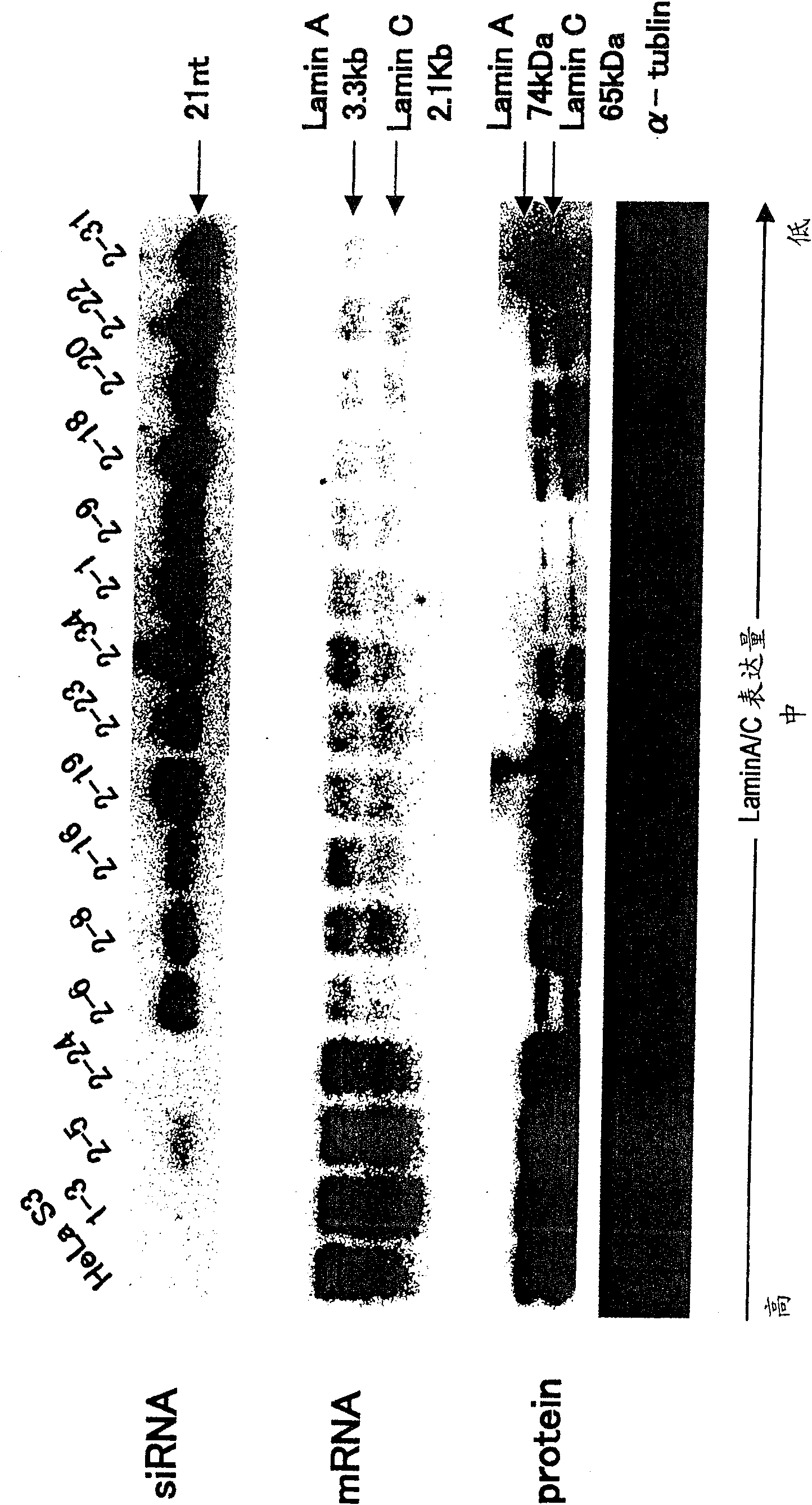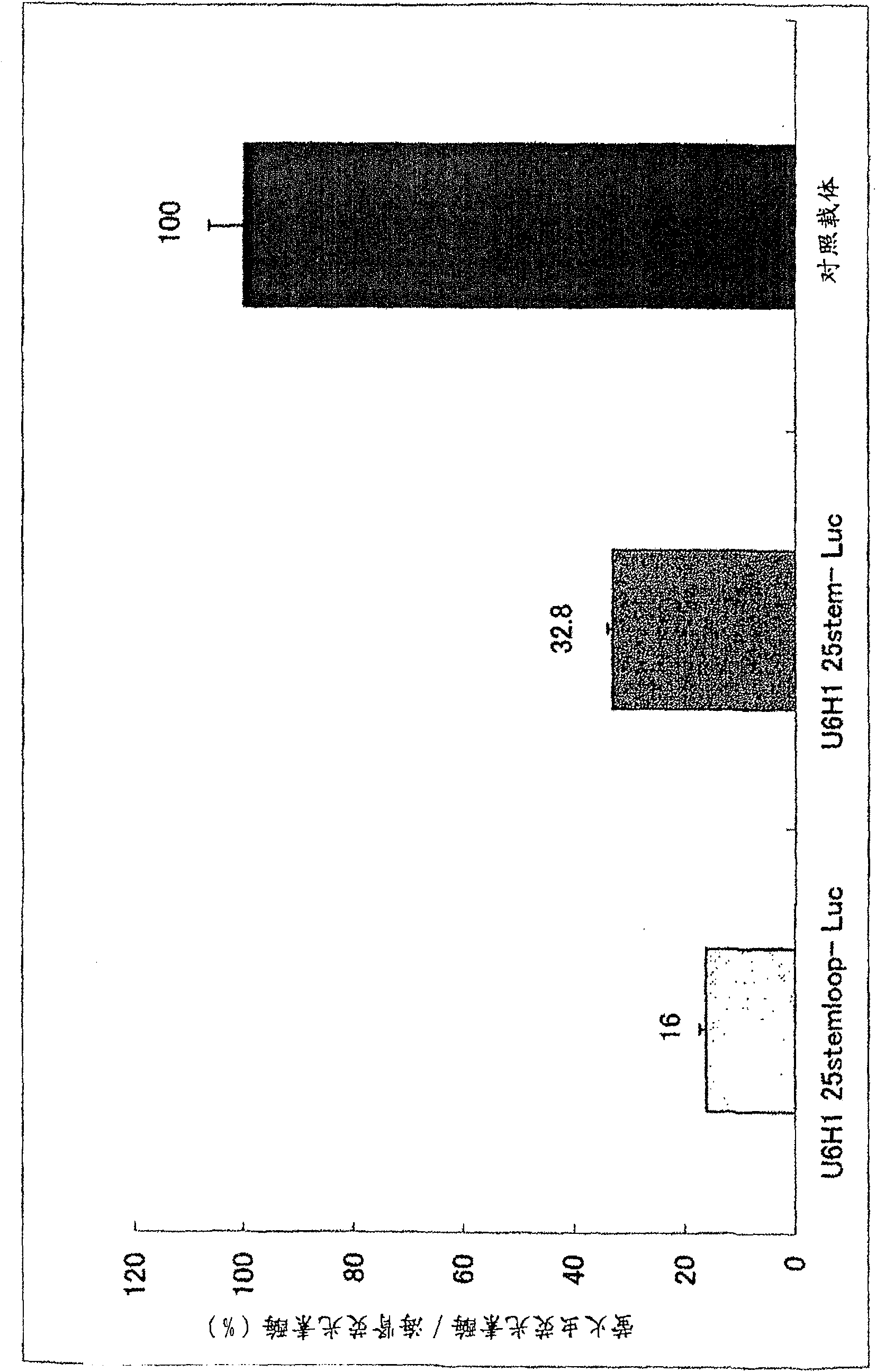Polynucleotide for target gene
A polynucleotide, target gene technology, applied in genetic engineering, plant gene improvement, application, etc., can solve the problems of difficult RNA interference effect, annealing and other problems
- Summary
- Abstract
- Description
- Claims
- Application Information
AI Technical Summary
Problems solved by technology
Method used
Image
Examples
Embodiment 1
[0138] Example 1: Synthesis of polynucleotides for target genes of the present invention
[0139] In this example, the target gene uses the sequence of 19 nucleotides at positions 434-452 in the luciferase gene (Genbank Accession No. U47296) as the target site for RNA interference, and synthesizes a target gene containing two element sequences. polynucleotide.
[0140] The RNA sequence was synthesized using a commercially available automatic synthesizer (ABI3900 high-throughput DNA synthesizer manufactured by Applied Biosystem) using the phosphate amino protection method and the reagents required for synthesizing RNA. In addition, as a non-specific control group, RNAs of forward sequence (F) and reverse sequence (R) consisting of 21 bases complementary to sequence positions 936-954 of EGFP (Genbank Accession No. U55763) were synthesized.
[0141] In the thus obtained polynucleotide for target gene of the present invention, the 12-base sequence of element (II) is named uGL3.12...
Embodiment 2
[0143] Example 2: RNA function inhibitory activity experiment using polynucleotides for target genes of the present invention
[0144] 1. Preparation of RNA for RNA transfection
[0145] The uGL3.12RNA (142nM) and uGL3.7RNA (135nM) obtained above were dissolved in distilled water to prepare a 100pM / μl solution.
[0146] Then, 30 μl of the above-mentioned RNA solution, 30 μl of distilled water and 240 μl of buffer solution (100 mM potassium acetate, 30 mM HEPES-KOH at pH 7.4, 2 mM magnesium acetate) were prepared into a mixed solution as the stock solution of uGL3.12RNA and uGL3.7RNA (stock solution: 10pmole / μl). The 5-fold and 10-fold dilutions were all diluted with the above buffer.
[0147] 2. Preparation of siRNA for non-specific control group
[0148] The single-stranded forward sequence (F) RNA made of 21 bases complementary to the sequence position 936-954 of the EGFP gene obtained in the above-mentioned embodiment 1 and each 10 pmol of RNA of the reverse sequence (R)...
Embodiment 3
[0166] Embodiment 3: the RNA function inhibition effect of Lamin A / C gene function inhibition carrier
[0167] In this example, the intracellular expression vector was prepared by using the 20-base sequence of the 994-1013 position of the Lamin A / C gene (Genbank Accession No. X03445) as the target site of RNA interference to evaluate its RNA function inhibitory effect .
[0168] (1) Preparation of Lamin A / C gene function inhibited cells
[0169] 1. Preparation of Lamin A / C gene function inhibition vector
[0170] The Lamin A / C gene function suppression vector was prepared as follows.
[0171] The human U6 promoter was PCR amplified using the following primers (oligos 1 and 2; Sequence Nos. 7, 8). Using this PCR amplified fragment as a template, PCR amplification was performed using oligomer 1 (SEQ ID NO: 7) and oligomer 3 (SEQ ID NO: 9), and a Csp45I restriction site was introduced to create a modified U6 promoter. The amplified fragment was double digested with restrictio...
PUM
 Login to View More
Login to View More Abstract
Description
Claims
Application Information
 Login to View More
Login to View More - R&D
- Intellectual Property
- Life Sciences
- Materials
- Tech Scout
- Unparalleled Data Quality
- Higher Quality Content
- 60% Fewer Hallucinations
Browse by: Latest US Patents, China's latest patents, Technical Efficacy Thesaurus, Application Domain, Technology Topic, Popular Technical Reports.
© 2025 PatSnap. All rights reserved.Legal|Privacy policy|Modern Slavery Act Transparency Statement|Sitemap|About US| Contact US: help@patsnap.com



